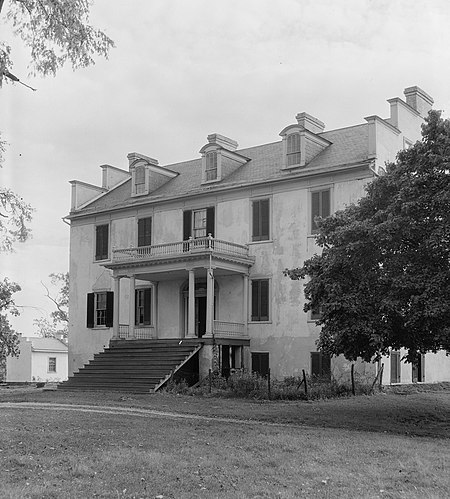Woodbury (Leetown, West Virginia)
Federal architecture in West VirginiaHistoric American Buildings Survey in West VirginiaHouses completed in 1834Houses in Jefferson County, West VirginiaHouses on the National Register of Historic Places in West Virginia ... and 2 more
National Register of Historic Places in Jefferson County, West VirginiaTucker family residences

Woodbury or Woodberry, is a historic mansion located near Leetown, Jefferson County, West Virginia. It was built in 1834-1835 for the jurist and Congressman Henry St. George Tucker, Sr. (1780–1848). Tucker lived at Woodbury from its construction until 1844.
Excerpt from the Wikipedia article Woodbury (Leetown, West Virginia) (License: CC BY-SA 3.0, Authors, Images).Woodbury (Leetown, West Virginia)
Hite Road,
Geographical coordinates (GPS) Address Nearby Places Show on map
Geographical coordinates (GPS)
| Latitude | Longitude |
|---|---|
| N 39.357777777778 ° | E -77.908055555556 ° |
Address
Hite Road
Hite Road
25430
West Virginia, United States
Open on Google Maps



